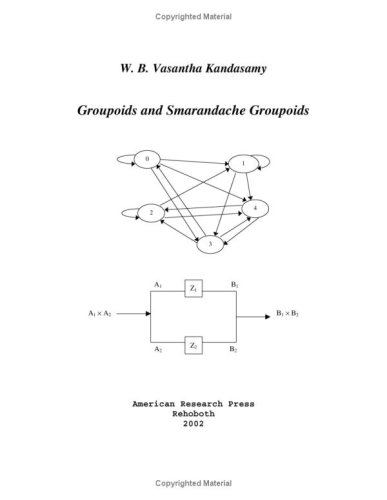
Groupoids and Smarandache Groupoids
by W. B. Vasantha Kandasamy
Publisher: American Research Press 2002
ISBN/ASIN: 1931233616
ISBN-13: 9781931233613
Number of pages: 115
Description:
This book aims to give a systematic development of the basic non-associative algebraic structures viz. Smarandache groupoids. Smarandache groupoids exhibits simultaneously the properties of a semigroup and a groupoid. Such a combined study of an associative and a non associative structure has not been so far carried out.
Download or read it online for free here:
Download link
(570KB, PDF)
Similar books
 Theory of Groups of Finite Order
Theory of Groups of Finite Orderby William Burnside - Cambridge University Press
After introducing permutation notation and defining group, the author discusses the simpler properties of group that are independent of their modes of representation; composition-series of groups; isomorphism of a group with itself; etc.
(10665 views)
 Symmetry Groups and Their Applications
Symmetry Groups and Their Applicationsby Willard Miller - Academic Press
A beginning graduate level book on applied group theory. Only those aspects of group theory are treated which are useful in the physical sciences, but the mathematical apparatus underlying the applications is presented with a high degree of rigor.
(15959 views)
 Representation Theory of Compact Groups
Representation Theory of Compact Groupsby Michael Ruzhansky, Ville Turunen - Aalto TKK
Contents: Groups (Groups without topology, Group actions and representations); Topological groups (Compact groups, Haar measure, Fourier transforms on compact groups..); Linear Lie groups (Exponential map, Lie groups and Lie algebras); Hopf algebras.
(11160 views)
 Groups and Semigroups: Connections and Contrasts
Groups and Semigroups: Connections and Contrastsby John Meakin - University of Nebraska-Lincoln
In the present paper, I will discuss some of these connections between group theory and semigroup theory, and I will also discuss some rather surprising contrasts between the theories. I will focus primarily on the theory of inverse semigroups.
(9546 views)